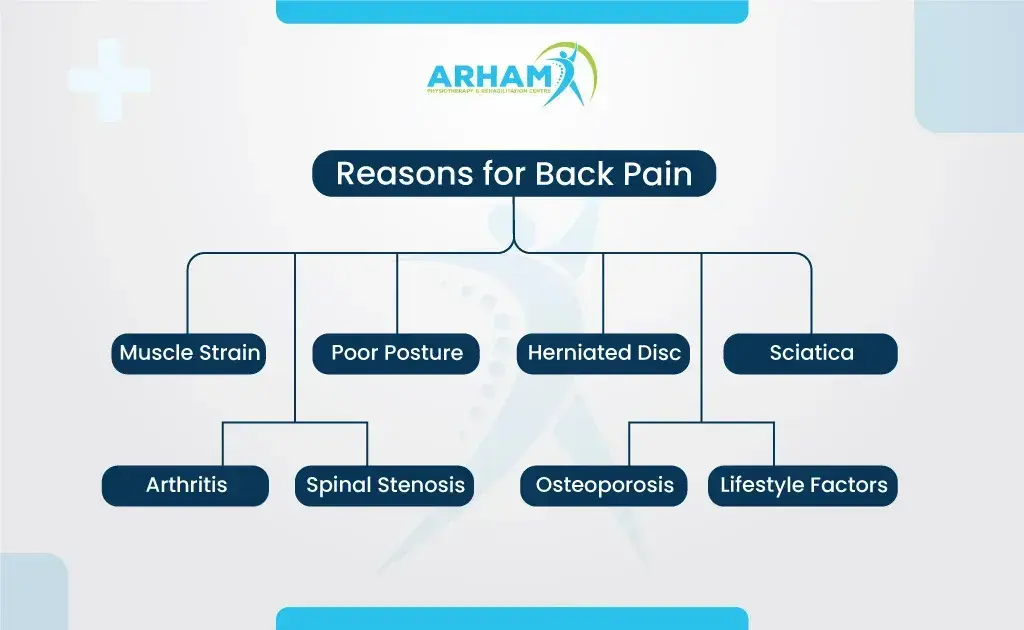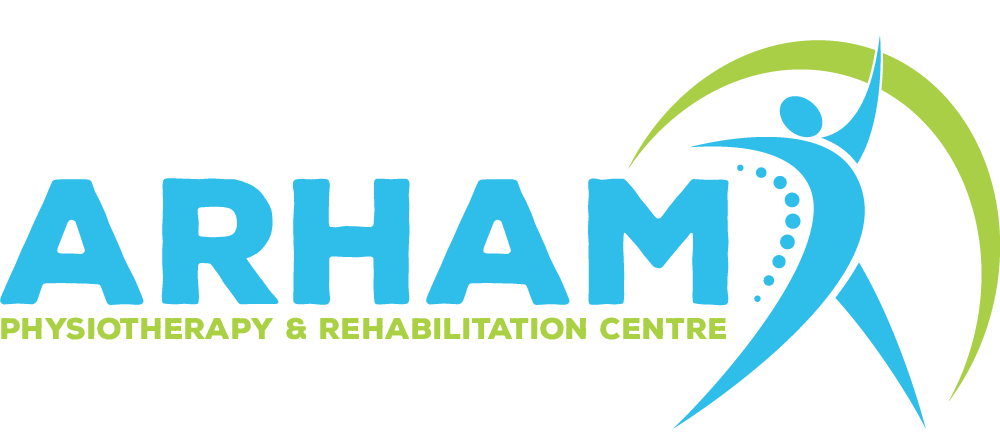The Role of Physiotherapy in Treating Neck and Back Pain
Back pain and neck pain have been the most common problems for hundreds of years on the earth, and many treatments have been introduced for that as well.
However, physiotherapy is a treatment that can help to get rid of any kind of pain without side effects, whether it is acute pain chronic pain, or any other pain.
Due to this reason, physical therapy is the most recommended treatment to manage back pain neck pain, or any pain.
There could be many reasons for these pains, it could be a wrong posture at your workplace, muscle stress, or other reasons.
But it’s essential to know you how you can recover from pain with the help of physiotherapy and a physiotherapist.
What Is Neck Pain and Back Pain, And How Are They Caused?

Neck and back pain are common issues that many people experience at some point in their lives. These discomforts can be caused by various factors, affecting daily activities and overall well-being. In this article, we’ll explore the nature of neck and back pain, its causes, and some common contributors to these discomforts.
What is Neck Pain
Neck pain refers to discomfort or soreness in the cervical region of the spine, which encompasses the area from the base of the skull to the top of the shoulders. It can range from mild discomfort to severe pain and stiffness, limiting head movement and causing discomfort when looking up, down, or turning the head.
What is Back Pain
Back pain is a sensation of discomfort or pain in the lumbar (lower back) or thoracic (middle back) regions of the spine. It can vary from a dull ache to sharp, shooting pain. Back pain often affects daily activities, such as bending, lifting, or even sitting for extended periods.
Reasons for Neck Pain

- Poor Posture: Slouching or spending long hours hunched over screens can strain neck muscles and ligaments.
- Muscle Strain: Overuse or sudden movements can lead to muscle strain in the neck area.
- Stress: Emotional tension can result in muscle tension, contributing to neck pain.
- Herniated Disc: The cushion-like discs between vertebrae can rupture and press on nerves, causing pain.
- Osteoarthritis: Age-related wear and tear can affect neck joints, causing discomfort.
- Whiplash: Sudden back-and-forth neck movement, often due to accidents, can result in strain.
Reasons for Back Pain

- Muscle Strain: Lifting heavy objects improperly or sudden movements can strain back muscles.
- Poor Posture: Slouching and improper ergonomics can strain the back and spine.
- Herniated Disc: The intervertebral discs can bulge or rupture, causing pressure on nerves.
- Sciatica: Compression of the sciatic nerve can lead to pain radiating from the lower back down the leg.
- Arthritis: Osteoarthritis or inflammatory arthritis can affect the spine’s joints.
- Spinal Stenosis: Narrowing of the spinal canal can lead to nerve compression and pain.
- Osteoporosis: Weak bones can lead to fractures and chronic back pain.
- Lifestyle e Factors: Lack of exercise, obesity, and smoking can contribute to back pain.
Neck and back pain are common discomforts that can stem from various causes. Poor posture, muscle strain, structural issues, and lifestyle factors all play a role in the development of these pains.
Maintaining good posture, staying active, and seeking medical advice for persistent pain are essential steps in managing and preventing neck and back discomfort. Always consult a healthcare professional for accurate diagnosis and personalized treatment plans.
Types of Physiotherapy
Physiotherapy, a specialized realm of healthcare dedicated to enhancing and restoring physical function and mobility, comes in two fundamental avatars: active and passive physiotherapy. Each category has its distinct objectives and plays a pivotal role in assisting patients on their journey to improved physical well-being.
Active Physiotherapy
Active physical therapy can be applied to patients who have the strength to move their muscles and body parts, and they can do that actively i.e. without any external support.
For example, you have pain in your neck and you need physiotherapy treatment for your neck to reduce or kill the pain.
Now, you can move your neck without any support, which means the muscles of your neck are still strong and can move independently.
In this case, the physiotherapist will suggest you some exercises to manage your neck pain, this is called active physiotherapy.
Passive Physiotherapy
Passive exercises are used when a patient’s muscle is inactive and can not move without external support.
For example, a person having paralysis is supposed to be given passive physiotherapy treatment, because he can not move his hand or leg without external support.
In passive physiotherapy treatment, the external support could be anything, whether it could be the other organ of his body, or else it could be the hand of the physiotherapist, or else it could be equipment or an instrument to move the part of the patient’s body.
Physiotherapy For Back Pain And Neck Pain
Physiotherapy helps a lot in the management of back pain and neck pain, in these pains, active physiotherapy exercises are used.
There are many exercises suggested by physiotherapists that can be done at home and you can recover from back pain and neck pain.
So, let’s explore what are useful physiotherapies for back pain and neck pain.
Physiotherapy For Back Pain
Before you know about how physiotherapy helps to manage back pain, you should know what are the common causes of back pain.
Reasons For Back Pain
Back pain can occur for various reasons. Some common causes include:
- Muscle Strain: Overexertion, lifting heavy objects, or sudden movements can strain the muscles and ligaments in the back, leading to pain.
- Poor Posture: Prolonged sitting, standing, or working in awkward positions can strain the muscles and spine, causing discomfort.
- Injury or Trauma: Accidents, falls, or sports injuries can damage the spine, muscles, or discs, resulting in pain.
- Herniated Disc: The soft, cushion-like discs between the spinal vertebrae can bulge or rupture, putting pressure on nerves and causing pain.
- Degenerative Conditions: Conditions like osteoarthritis, where the spinal joints and discs deteriorate over time, can lead to chronic back pain.
- Sciatica: Compression or irritation of the sciatic nerve, often due to a herniated disc, can cause sharp, shooting pain down the leg.
- Spinal Stenosis: Narrowing of the spinal canal can put pressure on the spinal cord and nerves, causing pain and numbness.
- Scoliosis: Abnormal curvature of the spine can lead to discomfort and pain, particularly in severe cases.
- Medical Conditions: Certain medical conditions like kidney stones, infections, or tumors can refer pain to in the back.
- Lifestyle Factors: Being overweight, lack of exercise, smoking, and poor mattress or sleeping habits can contribute to back pain.
- Stress: Emotional stress can manifest physically as muscle tension and contribute to back pain.
If you’re experiencing severe or persistent back pain, it’s advisable to consult a medical professional for proper evaluation and treatment.
How Physiotherapy Helps To Manage Back Pain
Physiotherapy can be very helpful in managing and alleviating back pain.
Physiotherapy is very helpful to manage back pain, a physiotherapist has specialized in examining and treating the issues related to muscles.
Here’s how physiotherapy can help:
- Assessment: A physiotherapist will first evaluate your condition, considering factors like your medical history, posture, movement patterns, and the nature of your back pain. This assessment helps them understand the underlying causes of your pain.
- Pain Relief: Physiotherapists use various techniques like manual therapy, soft tissue mobilization, and gentle exercises to provide immediate pain relief. They can also teach you techniques to manage pain at home.
- Exercise Prescription: Based on your assessment, the physiotherapist will design a tailored exercise program to improve your back’s strength, flexibility, and stability. These exercises target specific muscles to alleviate pain and prevent future issues.
- Posture Correction: Poor posture often contributes to back pain. A physiotherapist will teach you what should your posture be while doing different activities, and the exercises that you have to do daily, this will help to strengthen your muscles.
- Manual Therapy: Hands-on techniques like joint mobilization and manipulation can help improve joint mobility and reduce pain.
- Core Strengthening: A strong core provides support for your spine. The physiotherapist will guide you about the exercises that can make your core muscles strong and active to stabilize your spine and reduce the strain on your back.
- Stretching: Gentle stretching can alleviate muscle tightness and improve flexibility, easing tension in the back.
- Education: Physiotherapists educate you about body mechanics, proper lifting techniques, and ergonomics to prevent further strain on your back during daily activities.
- Functional Training: If your back pain affects your ability to perform certain activities, physiotherapists can help you regain functional movement through specific exercises and training.
- Long-term Management: The main goal of physiotherapy is to make you free from back pain forever by addressing the root cause of back pain, so it cannot occur again until you do unwanted activities.
- Patient Empowerment: Physiotherapy empowers you to actively participate in your recovery. By learning exercises and techniques, you can take control of your back pain management.
Remember, the effectiveness of physiotherapy depends on the specific cause and severity of your back pain.
You should consult a qualified physiotherapist who can create a personalized treatment plan tailored to your needs.
If your back pain is severe or chronic, a physiotherapist can also work in conjunction with other healthcare professionals to provide comprehensive care.
Reasons For Neck Pain
Neck pain can be caused by many reasons, there is not only one reason for neck pain, there are many incidents and activities that can invite neck pain.
- Muscle Strain: Poor posture, repetitive movements, or sudden overexertion can strain neck muscles.
- Poor Ergonomics: Incorrect sitting or working posture, especially with screens, can strain the neck.
- Text Neck: Constantly looking down at devices can strain the neck muscles and spine.
- Injury or Trauma: Accidents, falls, or whiplash can damage neck structures.
- Degenerative Conditions: Conditions like cervical osteoarthritis can cause chronic neck pain.
- Herniated Disc: Discs between neck vertebrae can bulge or rupture, pressing on nerves.
- Pinched Nerves: Nerve compression due to disc issues or bone spurs can lead to pain.
- Medical Conditions: Conditions like fibromyalgia or meningitis can cause neck discomfort.
- Sleeping Position: Poor sleeping posture can strain neck muscles and cause pain.
- Stress: Emotional stress can lead to muscle tension and neck pain.
- Referred Pain: Problems in other areas (e.g., shoulder) can cause neck pain.
If severe or persistent, consult a medical professional for proper diagnosis and treatment.
How Physiotherapy Helps To Manage Neck Pain
Physiotherapy can effectively aid in managing neck pain in the following ways:
- Assessment: A physiotherapist assesses the underlying causes of neck pain and tailors a treatment plan based on your specific condition.
- Manual Therapy: Techniques like joint mobilization and manipulation can improve neck joint mobility and alleviate pain.
- Strengthening Exercises: Targeted exercises strengthen neck muscles, supporting proper posture and reducing strain.
- Posture Correction: Physiotherapists guide you in adopting ergonomic posture to prevent pain recurrence.
- Stretching: Gentle neck stretches to improve flexibility, relieving muscle tension and discomfort.
- Range of Motion Exercises: Controlled movements enhance neck flexibility and function.
- Pain Relief Modalities: Techniques like heat, ice, or electrical stimulation provide immediate pain relief.
- Neck Traction: Gentle traction can relieve pressure on cervical discs and nerves.
- Education: Learn strategies to manage pain, adjust daily activities, and prevent future discomfort.
- Lifestyle Guidance: Advice on ergonomics, sleeping positions, and stress management to alleviate neck strain.
- Functional Training: Specific exercises help regain neck function for daily tasks.
- Patient Empowerment: Physiotherapy empowers you with tools to actively manage and prevent neck pain.
If neck pain persists or worsens, consult a physiotherapist or healthcare professional for proper evaluation and guidance.
Final Words on Physiotherapy For Neck Pain And Back Pain
Physiotherapy is very helpful to reduce/eliminate back pain and neck pain, The most beautiful thing about it is that you can do it at your home also, you have to visit the physiotherapist only a few days a month.
Moreover, we suggest you follow the guidelines that are given by your physiotherapists in terms of exercise and diet.
A very most important thing is that you should choose the right physiotherapist for the treatment of your back pain or neck pain.
At Arham Physio, we feel very proud to offer and provide physiotherapy treatment for back pain and neck pain with years of experienced physiotherapists.
Book a Quick Appointment by reaching out to us by
Phone No: +91 985 985 98 82
Email: [email protected]
FAQs
What are the benefits of neck physiotherapy?
Neck physiotherapy offers benefits such as alleviating pain through targeted exercises and stretches, improving neck mobility and posture, and empowering individuals with strategies to manage and prevent discomfort effectively.
How many physio sessions for neck pain?
The number of physiotherapy sessions for neck pain varies based on its cause and severity. Typically, a course of 6-8 sessions over several weeks can provide significant relief, but individual needs may differ. Consultation with a physiotherapist helps determine the appropriate session frequency and duration.
Which physiotherapy is best for neck pain?
For neck pain, physiotherapy approaches involving manual therapy, targeted exercises to strengthen neck muscles, and posture correction techniques tend to be effective. Consulting a skilled physiotherapist for personalized assessment and treatment recommendations is crucial for optimal results.
Can you do physiotherapy at home?
Yes, certain aspects of physiotherapy can be performed at home, such as prescribed exercises, stretches, and posture adjustments. However, it’s recommended to initially consult a physiotherapist for proper assessment, guidance, and personalized exercises to ensure safety and effectiveness.

